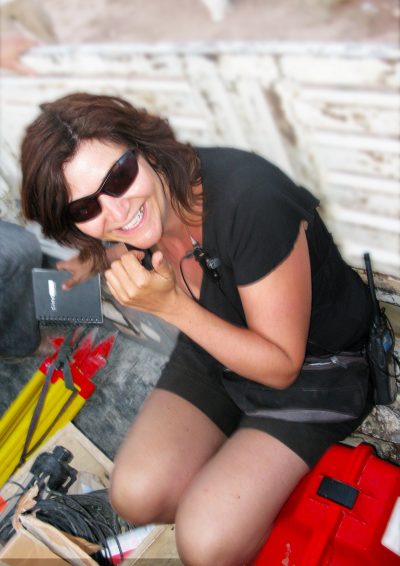There has been a lot of talk in recent weeks about the state of the visual effects; working conditions, wages, unions, subsidies and the future of the industry in general. But amongst those reports, pioneering company Cinesite has managed to push through a major upheaval – its sale by long-time owner Kodak – to essentially begin a new life.
We reported on the Kodak sale at the time, but where is Cinesite at the moment? Is the company stable? And what does the future hold? Mike Seymour sat down with one of the studio’s visual effects supervisors, Simon Stanley-Clamp, in LA recently to find out.

In May this year London-based Cinesite was sold by Kodak to UK private investment firm Endless LLP. As widely reported, Kodak tiptoed on the edge of bankruptcy and is now in the process of reorganizing its business units.
At the time of the split, Cinesite was knee-deep in work for Andrew Stanton’s John Carter (overseen at Cinesite by VFX supe Sue Rowe), which meant there wasn’t an initial change to employee numbers. “We were crewed up to 400 and were probably the biggest we’ve ever been,” Stanley-Clamp told fxguide. “As John Carter wound down the freelancers left and the stereo team stayed on but then shrank back down.” Having established a strong 3D conversion team for John Carter, Stanley-Clamp confirmed that this is a service Cinesite continues to offer when doing the visual effects on a film.
Read fxguide’s Art of Stereo Conversion article – which includes a look at Cinesite’s John Carter work
The new investment-backed facility has been working on World War Z, Skyfall and an as-yet unnamed project due for release in 2013. For future projects, Stanley-Clamp says Cinesite will now be pursuing work at all levels. “There are things we used to do and take for granted like previs, pitch-vis and technical-viz which were just rolled into the production. These are going to be marketed a little bit more strongly. It’s an area we’ve always done but never promoted,” he says.
Cinesite provided both visual effects and stereo conversion for John Carter. Watch a breakdown of the work.
Stanley-Clamp and technical director Michele Sciolette are now also Cinesite board members – “so there’s more of a creative push”. The other board members are managing director Anthony Hunt, production director Courtney Vanderslice-Law and finance director Duncan Rodger.
The bidding approach is a further area Cinesite plans to look at more closely, including working with London-based visual effects supervisors and producers, and getting involved earlier in the filmmaking process. “That’s where Nvizage, for example, are brilliant,” notes Stanley-Clamp, referring to the previs studio. “We did a lot of pitch-viz work on a Tim Burke film that didn’t get off the ground. It was completely speculative and we’re not going to make any money from it. But if we’re quite general about it, we can put it in a showreel – so if it’s a generic creature. I’m quite keen to generate material for our showreel.”

In terms of work being sought, Cinesite’s strength has in recent times been environments, but a more varied approach is now part of the plan. “We had a really big stab at creature animation back on Clash of the Titans,” says Stanley-Clamp, “and got a little bit of interest on that and it fell away. But we are going for everything. The scripts are coming in with a big variety of work – creatures, hard body stuff, and still a lot of environments.”
Away from features, Stanley-Clamp says Cinesite is not necessarily set up for commercials but would be pursuing ‘big TV’. The studio successfully produced effects for the HBO mini-series Generation Kill, and the VFX supe on that show Adam McInnes has an office at Cinesite.
Location-wise, Stanley-Clamp notes that Cinesite, which once had a LA presence, is certainly considering a move back to California, or Canada. “It would be naive not to respect the filmmakers in North America and to take advantage of the tax breaks,” he says. “London can compete of course but not quite on the same scale. It’s always been the game plan of the investors to support us through opening up somewhere else – be it Vancouver or Toronto. The idea is to fill London, get that maxed out and then open out to other places.”
What is clear is that the visual effects industry is better off for having Cinesite – a company of more than 20 years standing – back in the midst. It may be a turbulent time, but drawing on the history and expertise of the artists at the studio remains important for the industry at large.
